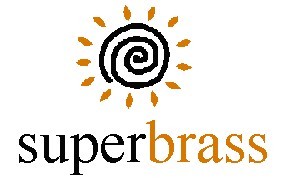No products
Comic Art Watches
New products
-

Amedeo Modigliani, Seated Nude, 1918, 34 mm solid Brass Tank Watch
33 mm solid brass casing with stainless steel back premium 2040 quartz...
$ 142.63 -

Tintin Professor Calculus Savate! Solid Brass Large 40 mm Gold finition
a very interesting handmade artisanale graphic art collectible wrist...
$ 158.11 -

Return of President Donald Trump. Make America Great Again Wrist Watch. Classic Americana!
Large Format Gents Stainless Steel Wrist Watch with Premium Quartz...
$ 145.89 -

Casino Roulette Wheel Monte Carlo Original Gambling Art Shiny Metallic Dial Solid Brass 40 mm Watch
40 mm large format solid brass casing with stainless steel back....
$ 137.74 -

Proud To Be An Eagle Scout, High Quality Solid Brass Boy Scouts 40 mm Wrist Watch
40 mm solid brass casing with stainless steel back premium 2040 quartz...
$ 137.74
Dr Seuss' CAT IN THE HAT Unisex Wrist Watch
COM-053
New product
29 mm rolled gold unisex size case, genuine leather strap, quartz movement
More info
Theodor Geisel, writing as Dr. Seuss, created The Cat in the Hat in response to the May 24, 1954, Life magazine article by John Hersey, titled "Why Do Students Bog Down on First R? A Local Committee Sheds Light on a National Problem: Reading." In the article, Hersey was critical of school primers:
In the classroom boys and girls are confronted with six books that have insipid illustrations depicting the slicked-up lives of other children. [Existing primers] feature abnormally courteous, unnaturally clean boys and girls. . . . In bookstores, anyone can buy brighter, livelier books featuring strange and wonderful animals and children who behave naturally, i.e., sometimes misbehave. Given incentive from school boards, publishers could do as well with primers.
Hersey’s arguments were enumerated over ten pages of Life magazine, which was a leading periodical in the U.S. at that time. After detailing many issues contributing to the dilemma connected with student reading levels, Hersey asked toward the end of the article:
Why should [school primers] not have pictures that widen rather than narrow the associative richness the children give to the words they illustrate — drawings like those of the wonderfully imaginative geniuses among children’s illustrators, Tenniel, Howard Pyle, "Seuss", Walt Disney?
Ted Geisel's friend William Ellsworth Spaulding, who was then the director of Houghton Mifflin's education division, invited Geisel to dinner in Boston and "proposed that Ted write and illustrate such a book for six- and seven-year olds who had already mastered the basic mechanics of reading. 'Write me a story that first-graders can't put down!" [Spaulding] challenged." Spaulding supplied Geisel with a list of 348 words that every six year old should know, and insisted that the book's vocabulary be limited to 225 words. Nine months later Dr. Seuss finished The Cat in the Hat, which used 223 words that appeared on the list plus 13 words that did not. Because Geisel was under contract with Random House, Houghton Mifflin retained the school rights to The Cat in the Hat and Random House retained the rights to trade sales.
The story is 1629 words in length and uses a vocabulary of only 236 distinct words, of which 54 occur once and 33 twice. Only a single word – another – has three syllables, while 14 have two and the remaining 221 are monosyllabic. The longest words are something and playthings.
In an interview he gave in Arizona magazine in June 1981, Dr. Seuss claimed the book took nine months to complete due to the difficulty in writing a book from the 223 selected words. He added that the title for the book came from his desire to have the title rhyme and the first two suitable rhyming words that he could find from the list were "cat" and "hat". Dr. Seuss also regretted the association of his book and the "look say" reading method adopted during the Dewey revolt in the 1920s. He expressed the opinion that "... killing phonics was one of the greatest causes of illiteracy in the country."
The Cat in the Hat (1957) is the first book featuring the title character. In it the Cat brings a cheerful, exotic and exuberant form of chaos to a household of two young children, brother and sister, one rainy day while their mother leaves them unattended. The Cat performs all sorts of wacky tricks—the Cat at one point balances a teacup, some milk, a cake, three books, the Fish, a rake, a toy boat, a toy man, a red fan, and his umbrella while he is on a ball to the chagrin of the fish—to amuse the children, with mixed results. Then, the Cat gets a box from outside. Inside the box are two creatures named Thing One and Thing Two, who begin to fly kites in the house. The Cat's antics are vainly opposed by the family pet, a sapient and articulate fish. The children (Sally and her unnamed older brother, who serves as the narrator) ultimately prove exemplarylatchkey children, capturing the Things with a net and bringing the Cat under control. To make up for the chaos he has caused, he cleans up the house on his way out, disappearing a second before the mother arrives. The mother asks what they did while she was out, but it is not revealed whether or not they tell her - the story ends with the question, 'What would you do if your mother asked you?'
The book has been popular since its publication, and a logo featuring the Cat adorns all Dr. Seuss publications and animated films produced after The Cat in the Hat. Seuss wrote the book because he felt that there should be more entertaining and fun material for beginning readers. From a literary point of view, the book is a feat of skill, since it keeps to a tiny vocabulary and tells an entertaining tale. Literary critics occasionally write recreational essays about the work, having fun with issues such as the absence of the mother and the psychological or symbolic characterizations of Cat, Things, and Fish. This book is written with short lines in anapestic dimeter—half the length of the lines in Yertle the Turtle (see Dr. Seuss's meters).
More than 11 million copies of The Cat in the Hat have been printed. It has been translated into more than 12 different languages, including Latin, under the title Cattus Petasatus, and Yiddish, under the title Di Kats der Payats. Based on a 2007 online poll, the National Education Association named the book one of its "Teachers' Top 100 Books for Children." It was one of the "Top 100 Picture Books" of all time in a 2012 poll by School Library Journal.
Reviews
No customer reviews for the moment.





